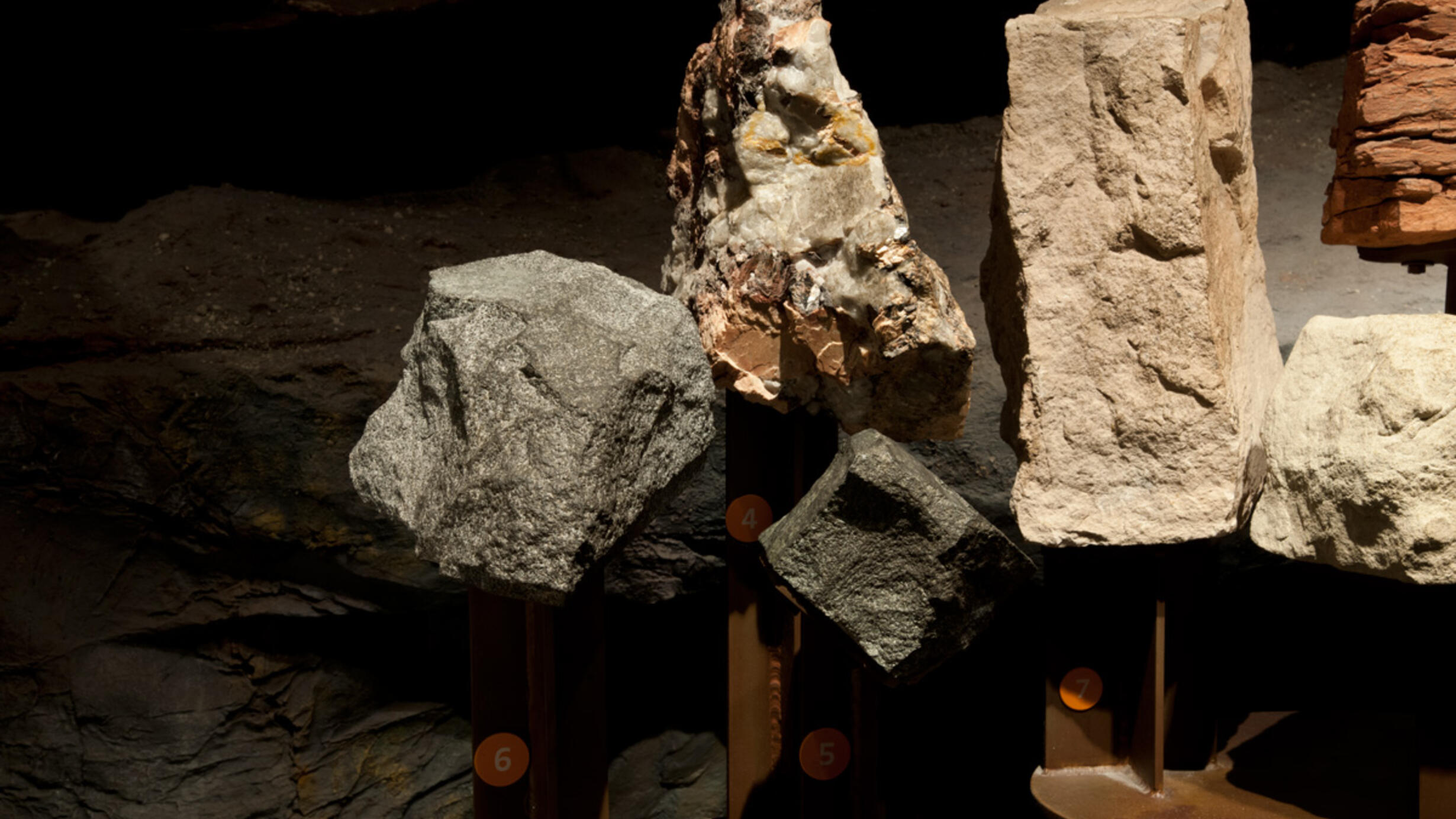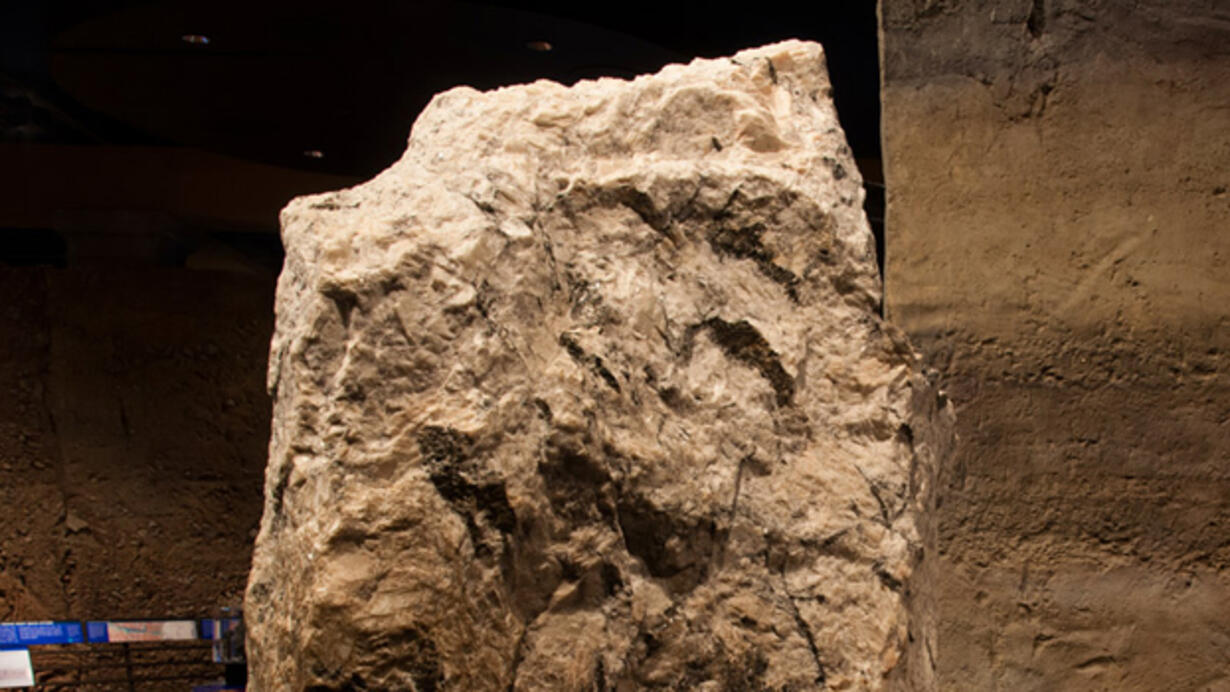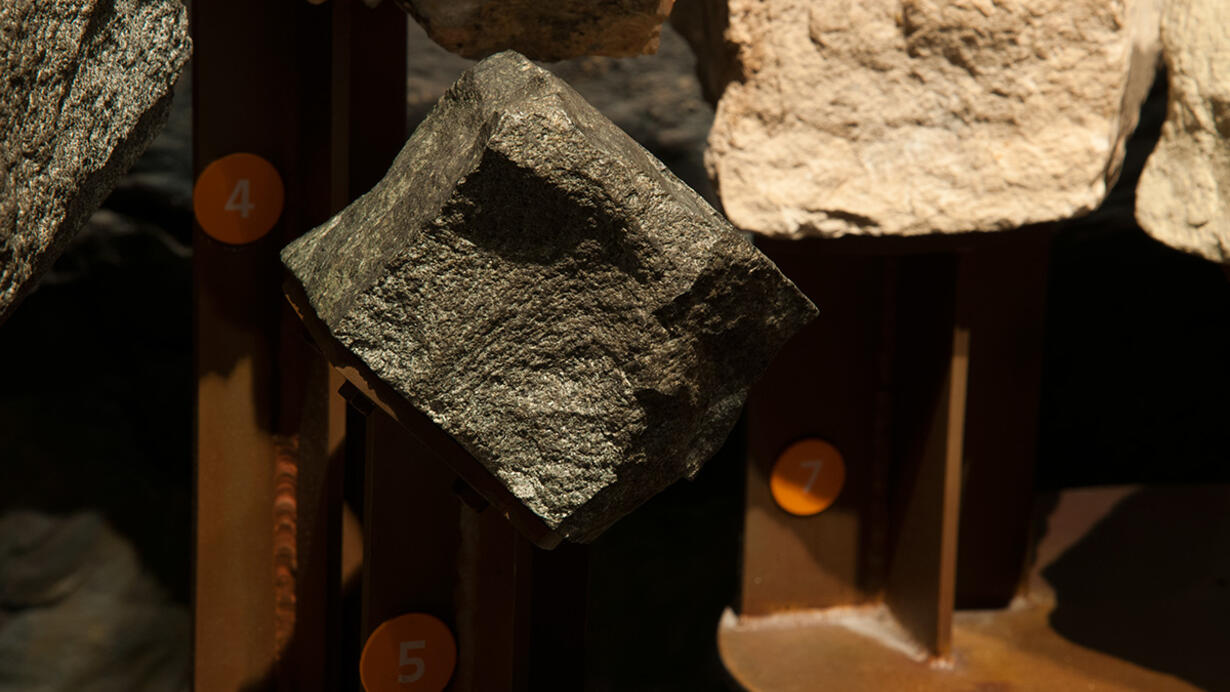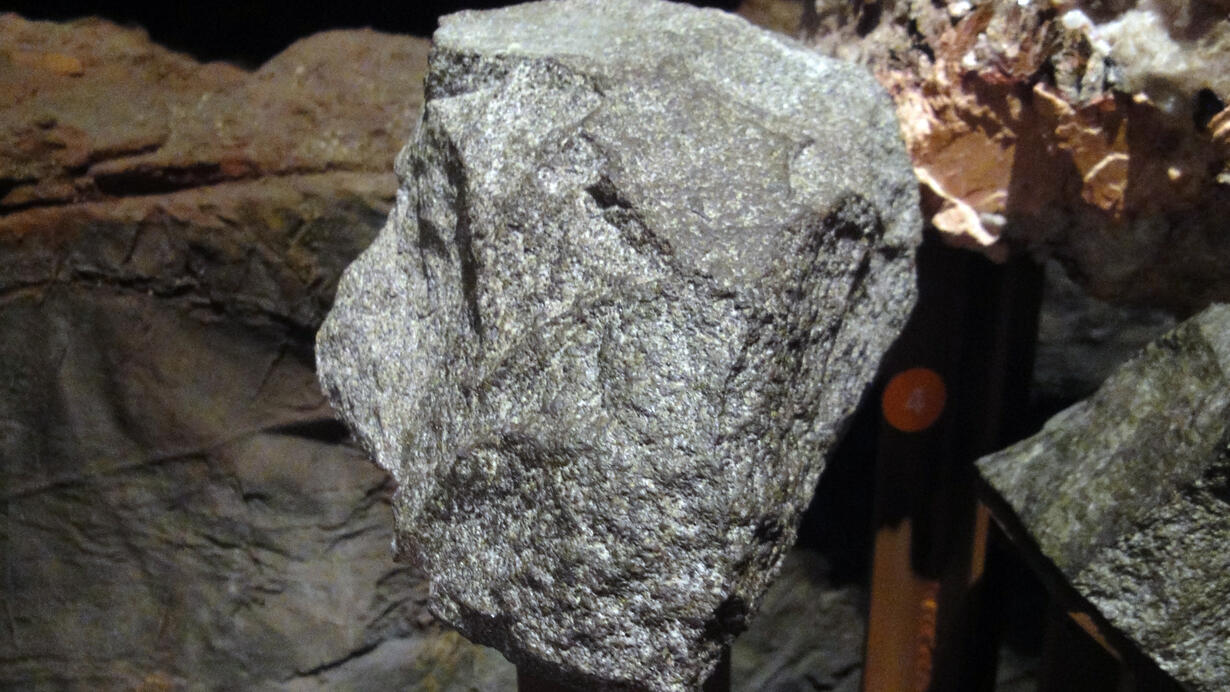Igneous Rocks
Part of Hall of Planet Earth.

Igneous rocks solidify from molten rock (called magma within the Earth and lava on the surface). They are identified by mineral content and texture — the size and shape of their mineral grains.
Texture is controlled by the rate of cooling: magma that cools slowly deep in the Earth forms rock with large crystals, and lava that cools quickly on the surface forms fine-grained rock.
In This Section

Granite Pegmatite
This rock formed deep in the crust, near the top of a crystallizing magma chamber. It is composed of the minerals quartz (gray), orthoclase (pink), albite (white), and mica (dark and platy). The larger crystals grew more slowly than the smaller crystals.

Diabase
This rock solidified from a basaltic magma within a few hundred meters of the surface, probably beneath a volcano. It cooled rapidly, giving it a fine-grained, peppery appearance. The black mineral is pyroxene, and the white one is plagioclase.
Donated by TILICON, Haverstraw, New York.

Diorite
This rock crystallized in a mountain belt. It contains the minerals plagioclase (white) and hornblende (black).
Donated by New England Stone Industries, Inc., Esmond, Rhode Island.